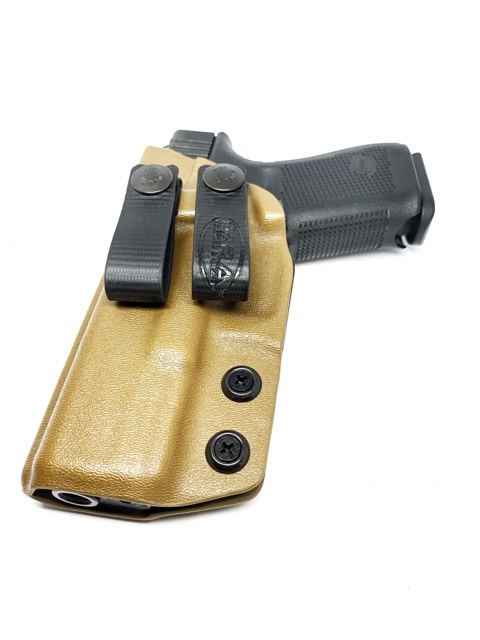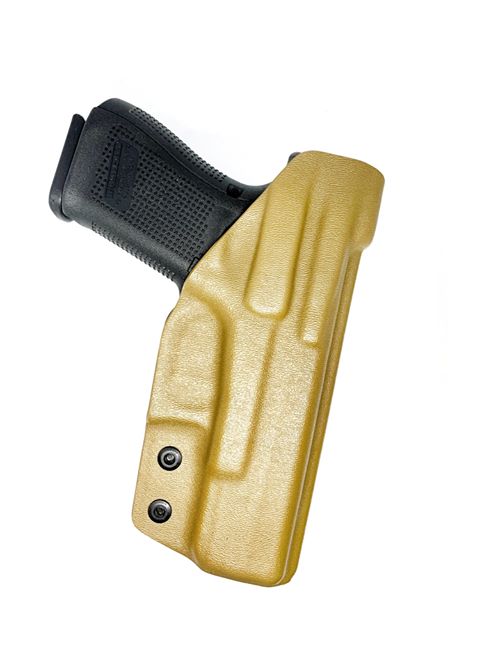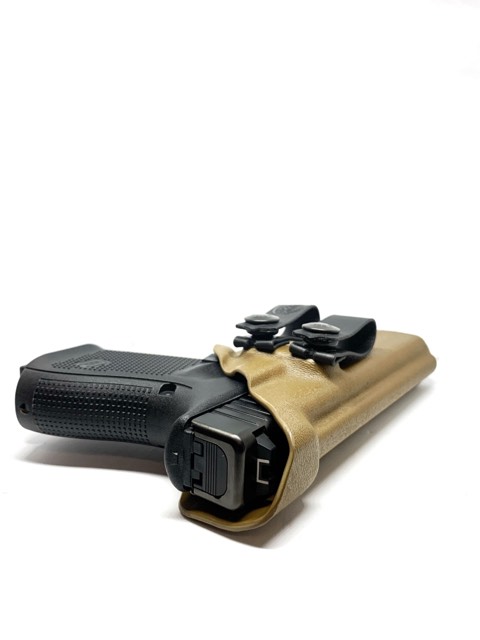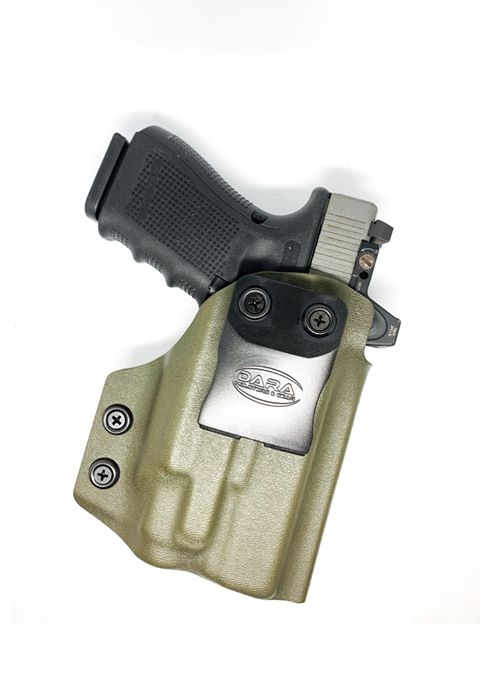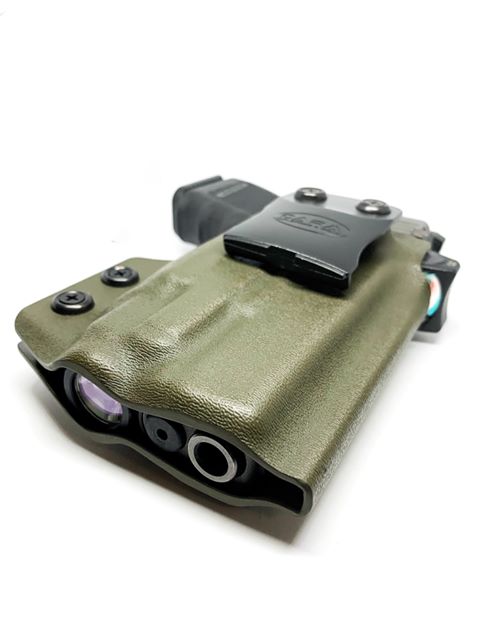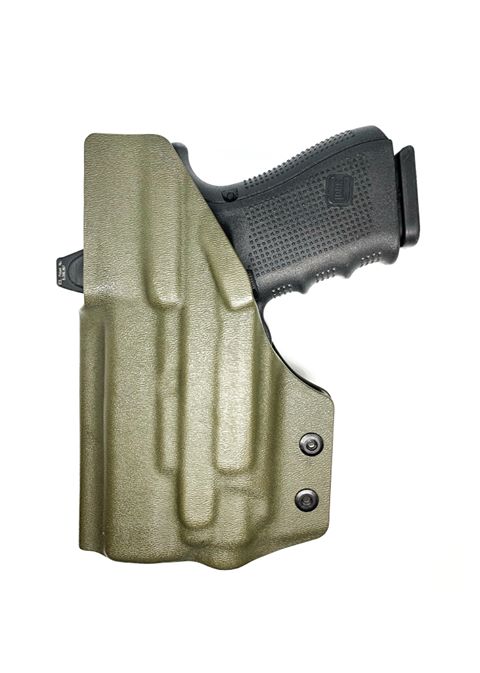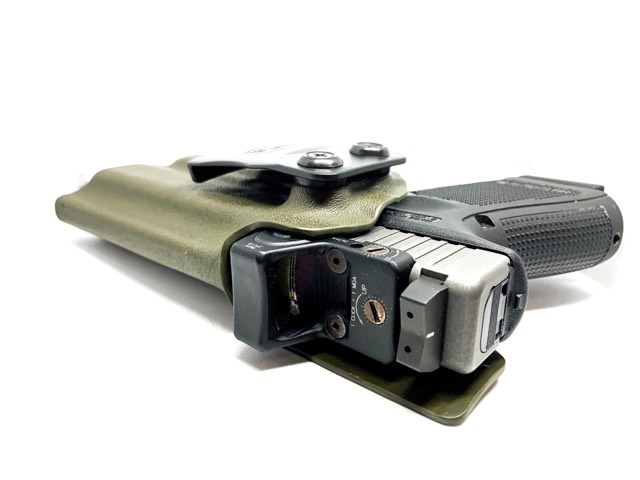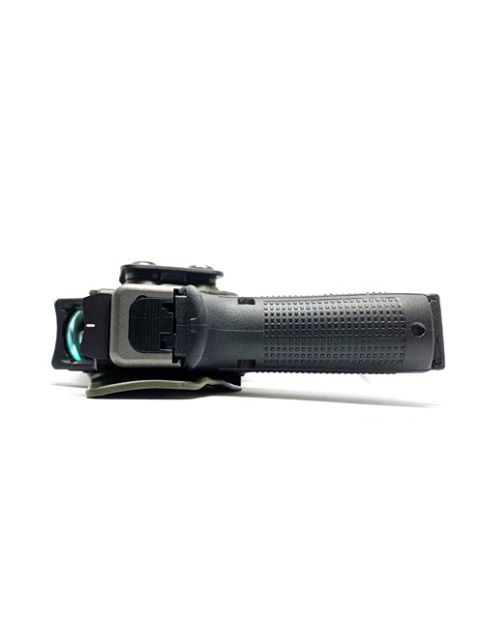Popular Holsters from July: holster for Glock 19 gen 5 & RMR with TLR-8
Posted by Dara Holsters on Aug 14, 2019
Popular in July: Glock 19 gen 5 IWB Holster with Soft Loops & Glock 19 with Optic & TLR-8
Holster Specs:
The Dara Custom Kydex Inside the Waistband Holster functions just like it's no-nonsense name. The IWB fits inside your waistband for the ultimate concealed carry holster. The trigger guard, magazine release and slide are all covered by material. Made from .093" Kydex/Boltaron, using Melonite and Zinc finished hardened steel hardware, our materials are far superior than our competition and will last twice as long. Each holster comes with an adjustable Military grade rubber retention system, as well as a lifetime warranty and 100% satisfaction guarantee.
How to Order:
Firearm:
Start by choosing your firearm model. We have two drop down menus that list each Manufacturer and Model in alphabetical order. If you don't see your firearm, we may not have that model available just yet. You can contact Customer Support to see if your model is available.
Holster Color:
The next step is choosing your Holster Color. We do provide swatches on the order form, but larger pictures can be found on our FAQ page here.
Draw Hand:
Choose how you'd like to carry the holster. If you plan to carry using a method not listed on the drop down menu, please see if your specific carry method is listed under the 'SHOP HOLSTERS' section on the main menu at the top of the page.
Belt Attachment:
Choose your desired belt attachment from the drop down menu, along with the corresponding belt size. 1.5" is the most common belt size. 1.75" is most common for tactical belts, and 2"-2.25" is common for duty belts.
Ride Height:
This is how your holster and firearm will sit in relation to the belt, vertically. A low ride height put the grip of the gun lower in the belt line. Be careful with a low ride height, as the grip of the firearm can become buried easily with a reverse cant angle. A mid ride height, which is the most common, will put the top of the belt in line with where the trigger guard meets the frame. The high ride height will put the holster higher up on the belt, giving you a full grip. To see the ride height and cant angle chart, scroll through the product pictures.
Cant Angles:
We offer many different cant angles conducive to every carry method. If you plan to carry at the hip, you'll want to choose a straight draw (0° cant) or forward cant angle. The forward cant angle tilts the grip up and forward and the muzzle backwards. If you want to carry crossdraw, you'll need to choose a reverse cant angle, which tilts the grip down and back, the muzzle forward.
Custom Notes:
This is where you'll want to bring any customizations up. We need to know about switched magazine release buttons, extended mag release buttons, suppressor height sights and other such modifications.
Have a light or laser attachment? Check out our light bearing IWB Holster.Want to get the most out of concealed carry? Check out our IWB Single Magazine Carriers. For more information about our IWB Holsters, visit our FAQ page or our Inside the Waistband Holster Breakdown.

|
|||
|
|
How to Order:
Firearm:
Start by choosing your firearm model. We have two drop down menus that list each Manufacturer and Model in alphabetical order. If you don't see your firearm, we may not have that model available just yet. You can contact Customer Support to see if your model is available.
Holster Color:
The next step is choosing your Holster Color. We do provide swatches on the order form, but larger pictures can be found on our FAQ page here.
Draw Hand:
Choose how you'd like to carry the holster. If you plan to carry using a method not listed on the drop down menu, please see if your specific carry method is listed under the 'SHOP HOLSTERS' section on the main menu at the top of the page.
Belt Attachment:
Choose your desired belt attachment from the drop down menu, along with the corresponding belt size. 1.5" is the most common belt size. 1.75" is most common for tactical belts, and 2"-2.25" is common for duty belts.
Ride Height:
This is how your holster and firearm will sit in relation to the belt, vertically. A low ride height put the grip of the gun lower in the belt line. Be careful with a low ride height, as the grip of the firearm can become buried easily with a reverse cant angle. A mid ride height, which is the most common, will put the top of the belt in line with where the trigger guard meets the frame. The high ride height will put the holster higher up on the belt, giving you a full grip. To see the ride height and cant angle chart, scroll through the product pictures.
Cant Angles:
We offer many different cant angles conducive to every carry method. If you plan to carry at the hip, you'll want to choose a straight draw (0° cant) or forward cant angle. The forward cant angle tilts the grip up and forward and the muzzle backwards. If you want to carry crossdraw, you'll need to choose a reverse cant angle, which tilts the grip down and back, the muzzle forward.
Custom Notes:
This is where you'll want to bring any customizations up. We need to know about switched magazine release buttons, extended mag release buttons, suppressor height sights and other such modifications.


